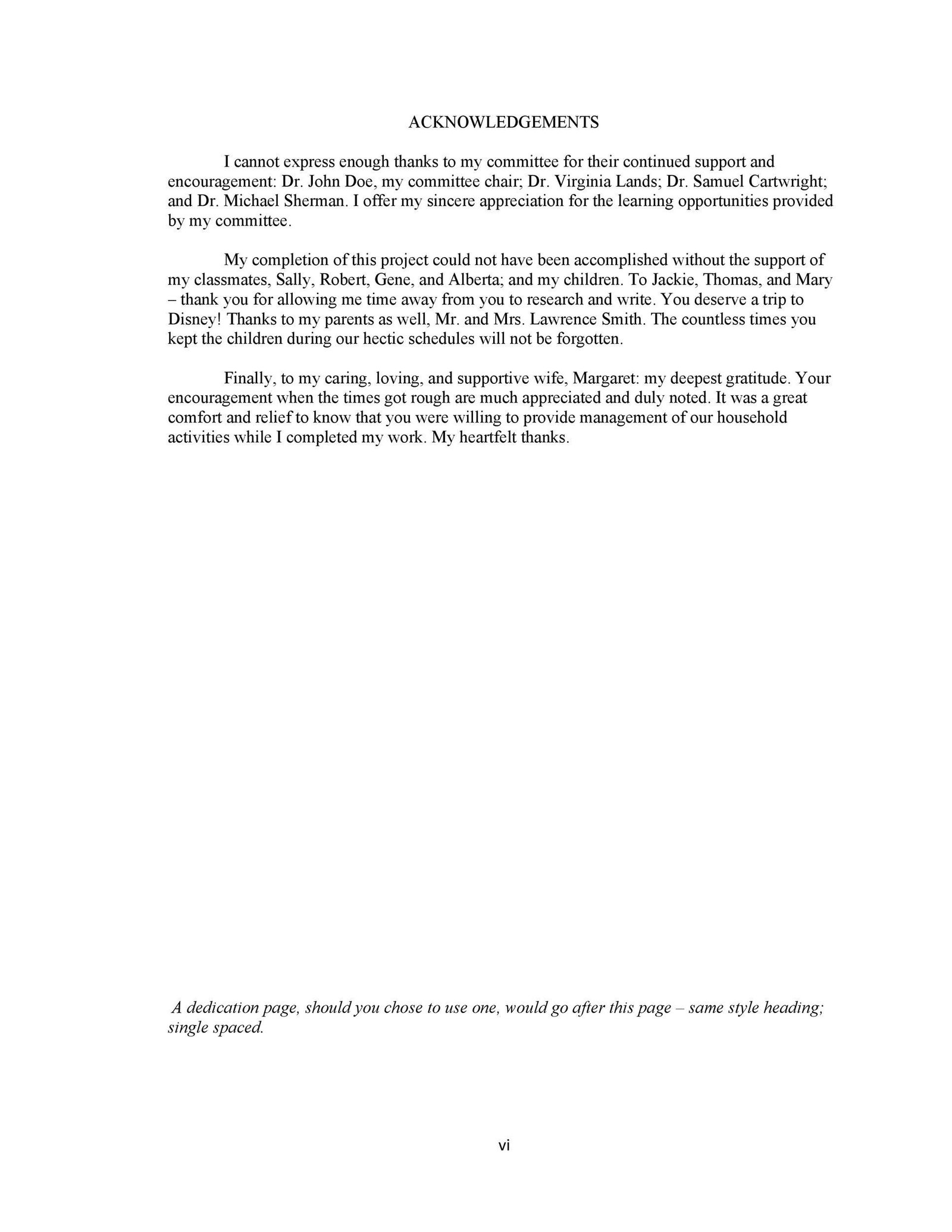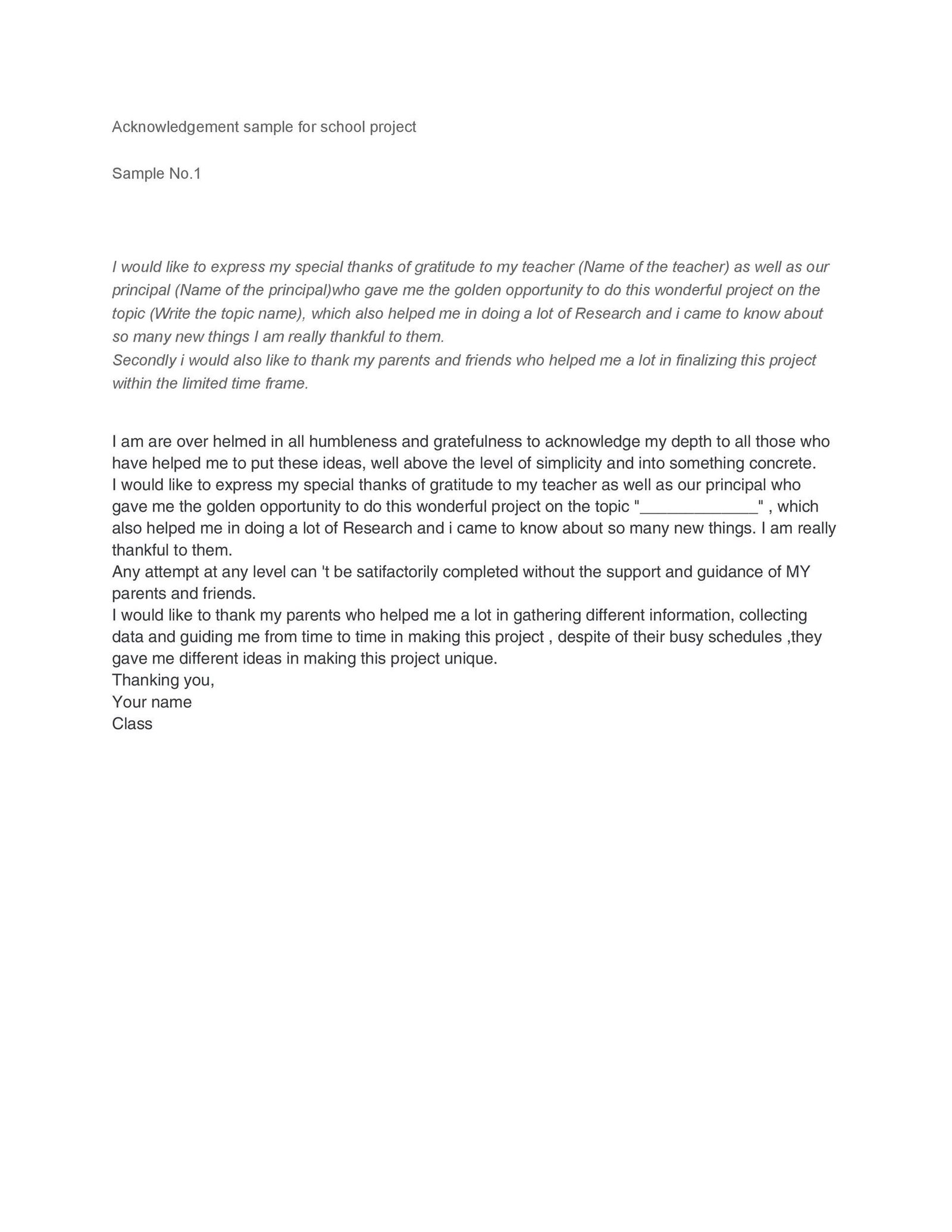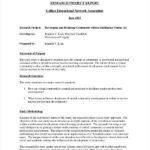research report acknowledgement

In the realm of academia and professional research, the journey from a mere idea to a polished report is often long and winding, requiring the invaluable contributions of a myriad of individuals. As scholars and researchers navigate this intricate landscape, one critical element of their work often remains hidden in the shadows: the acknowledgement section. This humble yet profound aspect of a research report serves as a heartfelt tribute to those who have provided support, guidance, and inspiration along the way. From mentors and peers to funding organizations and family members, acknowledging these contributions not only embodies gratitude but also reinforces the collaborative spirit of knowledge creation. In this article, we will explore the significance of research report acknowledgements, their essential components, and the art of crafting a sincere and impactful tribute that honors the collective effort behind every scholarly achievement.
Understanding the Importance of Acknowledgements in Research Reports
Acknowledgements in research reports serve as a crucial bridge between the researcher and the wider community. They highlight the collaborative nature of research, emphasizing that no project is completed in isolation. Recognition of contributions offers insights into the diverse roles individuals and organizations play in the research process. By acknowledging funding bodies, mentors, colleagues, and even institutions that provided resources, researchers foster a sense of gratitude and respect. This not only enriches the narrative of the report but also enhances the credibility of the research by showcasing the support and collaboration behind it.
Moreover, including acknowledgements creates a transparent account of influences in the research journey. It encourages ethical practices and promotes an atmosphere of accountability by making clear the sources of support that contributed to the project. In addition to improving the integrity of the research, these statements can also highlight important partnerships that might interest future researchers or funding agencies. Here are some key elements often found in research acknowledgements:
- Funding Sources: Names of organizations or grants that financed the research.
- Academic Advisors: Mentorship and guidance received throughout the project.
- Collaborators: Contributions from peers and co-researchers.
- Institutional Support: Resources provided by universities or institutions.
- Families and Friends: Personal support that encouraged the researcher through challenges.
| Contribution Type | Example |
|---|---|
| Financial Support | National Science Foundation Grant #123456 |
| Research Mentorship | Dr. Emily Smith, University of XYZ |
| Collaborative Work | John Doe, Co-researcher |

Crafting Thoughtful Acknowledgements: Key Elements to Include
When crafting your acknowledgements, it’s essential to think about who played a vital role in the completion of your research report. Highlight your collaborators and advisors, as their insights and guidance were likely crucial. Additionally, consider mentioning funding bodies or institutions that supported your research financially or logistically. This not only shows gratitude but also helps readers understand the influences that shaped your work. Make sure to express a heartfelt thanks to those who provided feedback and encouragement, as their support often helps to refine and enhance your ideas.
Another key aspect is recognizing the participants or subjects involved in your research. It’s important to appreciate their contribution, which often goes unnoticed but is essential to the validity of your findings. Additionally, you can include a mention of family and friends who provided emotional support during challenging phases of your work. Consider using a simple table to summarize these key acknowledgements for clarity:
| Category | Individuals/Groups |
|---|---|
| Collaborators | John Doe, Jane Smith |
| Advisors | Dr. Emily White |
| Funding Sources | XYZ Research Grant |
| Participants | Survey Respondents |
| Family & Friends | My parents, Sarah |

Navigating Professional Etiquette in Research Acknowledgements
Understanding professional etiquette in research acknowledgements is crucial for building and maintaining positive relationships within the academic community. An acknowledgement section is not merely a formality; it is an opportunity to express gratitude to those who have played a significant role in your research journey. When crafting your acknowledgements, keep a few essential principles in mind:
- Be Specific: Clearly identify individuals and their contributions. This could include advisors, mentors, peers, and institutions.
- Be Gracious: Acknowledge the support given, whether it be financial, intellectual, or emotional.
- Maintain Professionalism: Use formal language, and avoid overly casual remarks or informal nicknames.
Moreover, consider the hierarchy of contributions when listing individuals. It is customary to begin with the most significant contributors, such as advisors or funding bodies, followed by colleagues and friends. To help organize your acknowledgements clearly, you might find this simple table useful:
| Contributor | Role |
|---|---|
| Dr. Jane Smith | Advisory role |
| Research Fund XYZ | Financial support |
| John Doe | Peer collaboration |
By organizing your acknowledgements thoughtfully and adhering to these etiquette guidelines, you can ensure that this section of your research report reflects the integrity and appreciation necessary for a professional academic environment.

Enhancing Clarity and Impact: Best Practices for Acknowledgements
Crafting acknowledgements that resonate requires clarity and intentionality. Begin by thoughtfully contemplating whom you wish to thank, focusing on contributors who have significantly influenced your research journey. Distill your gratitude into precise language to showcase the unique role each individual or organization played in your work. When listing acknowledgements, consider employing bullet points for a clean presentation. This approach enhances readability while ensuring that each contributor’s efforts are distinctly recognized. Remember to include:
- Advisors and Mentors: Highlight their guidance and support.
- Collaborators: Acknowledge those who worked alongside you.
- Funding Bodies: Credit any financial support received.
- Family and Friends: Appreciate the personal support throughout your research.
To maximize impact, a concise table can effectively summarize major contributions and their significance. This not only streamlines information but also underscores the collaborative nature of research endeavors:
| Contributor | Contribution |
|---|---|
| Dr. Jane Smith | Research guidance and mentorship |
| XYZ Funding Agency | Financial support |
| John Doe | Data analysis and interpretation |
| Emily Johnson | Administrative assistance |
The Way Forward
writing a research report is not just about presenting findings or analyzing data; it is also an opportunity to acknowledge the many hands and minds that contribute to the quest for knowledge. Recognizing the support received from mentors, colleagues, institutions, and funding bodies not only enriches the research process but also fosters a spirit of collaboration essential in academia. As we pen those final thoughts in our acknowledgment sections, let us remember that every contribution, no matter how small, has played a vital role in shaping our work. By honoring those who have journeyed alongside us, we not only express our gratitude but also pave the way for future explorations, reminding the academic community of the interconnectedness that fuels discovery.
As we close this chapter on acknowledgments, may it serve as a reminder that behind every successful research project lies an intricate web of support and encouragement—each thread vital to the fabric of knowledge.




